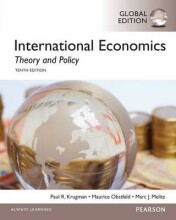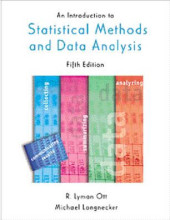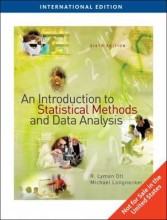Money, interest rates and the global economy - The money market, the interest rate and the LM curve
12 important questions on Money, interest rates and the global economy - The money market, the interest rate and the LM curve
What does the LM curve represent in the context of the money supply and demand diagrams provided, and how does a change in income affect the money demand and interest rate according to these figures?
- At the equilibrium interest rate (i₀), the quantity of money demanded is equal to the money supply (M).
- An increase in income from Y₀ to Y₁ shifts the money demand curve to the right, indicating higher money demand at any given interest rate.
- To maintain equilibrium, the interest rate must rise from i₀ to i₁, which is shown in panel (b) as a movement along the LM curve from point A to point B.
What is the traditional way of conducting monetary policy, and how is the money supply manipulated in this context?
- Central banks set the money supply at their preferred level, represented by \(M = \bar{M}\) indicating an exogenous money supply.
- The money supply curve is graphed as a vertical line on the money demand curve.
- This approach offers a basic understanding of money market interactions, including supply and demand, and provides insight for more complex situations such as bank runs and liquidity traps.
What is speculative demand for money and how does it relate to financial crises?
- This type of demand can take the spotlight during financial crises, as individuals and institutions may prefer liquidity over potentially higher returns that come with risks.
- It's exemplified by behavior such as refraining from investing in the stock market due to fears of a continuous decline or by keeping money in highly liquid forms until financial stability resumes.
- Higher grades + faster learning
- Never study anything twice
- 100% sure, 100% understanding
How is the risk premium defined in the context of financial assets?
- It represents the additional compensation the investor requires for taking on the additional risk compared to a guaranteed investment.
What role does the central bank play in the money supply process?
- It controls the money supply through transactions such as buying or selling treasury bills or foreign exchange, either directly from the government, private sector, or by setting interest rates.
- Its role includes adjusting the money supply (M) or setting the interest rate (i) to achieve desired monetary policy outcomes.
What is the relationship between the total costs of holding liquidity, the number of trips to the bank, and the parameters \( a \) and \( n \) in the given mathematical model?
- \( a/n \) denotes the fixed costs of going to the bank, such as transportation or time costs.
- \( iY/(2n) \) represents forgone interest on the average monthly consumption spending.
- The first-order condition for a minimum \( TC \) in terms of trips to the bank, \( n \), is given as \( a = iY/(2n^{2}) \), which implies \( n = [ay/(2i)]^{0.5} \).
- With this relationship, it is seen that the number of trips to the bank, \( n \), increases as income \( Y \) increases and decreases with higher interest rates \( i \).
What characteristics differentiate flow variables from stock variables and how does this distinction apply to income and capital?
- Stock variables are measured at a point in time, with examples including the money supply, the number of workers, and the capital stock.
- Income is a flow variable as it is earned over time, while capital is a stock variable represented by a specific amount at a given time.
How does the money demand curve change with variations in income and interest rate according to the provided functions and explanations?
- The curve shifts to the right (an increase) when income, \( Y \), rises, which relates to more money needed for transaction purposes.
- Conversely, the curve shifts to the left (a decrease) as the interest rate, \( i \), increases, since higher interest rates discourage holding money due to increased opportunity costs.
- The demand for money decreases as more frequent trips to the bank occur with higher income because the number of trips, \( n \), is positively correlated to income, reflecting reduced average money holdings.
What distinction do economists make between the concepts of money and wealth, and what are the main functions of money highlighted in the text?
- Money is described as being a means for holding wealth, although it usually represents a smaller portion of a person's total wealth.
- Money serves three primary functions:
1. A unit of account, which allows for the measurement and comparison of the value of different items.
2. A medium of exchange, facilitating swift and easy transactions for goods and services.
3. A store of value, enabling individuals to preserve buying power for future use.
How does the demand for money vary with income and consumption, and what are the implications for average money holdings during a month?
- Higher consumption spending requires more money, thus, the average money holdings increase with income.
- The average money holdings during a month depend on the consumer’s level of consumption and the frequency of replenishing cash.
What explains the shape and shifts of the money supply curve as depicted in the diagrams?
- Shifts in the money supply curve occur when the central bank intervenes to increase or decrease the overall money supply:
- When money supply \( M \) increases, the curve shifts to the right.
- When money supply \( M \) decreases, the curve shifts to the left.
- These shifts are independent of income and consumption patterns and are purely a result of policy decisions.
Describe the two scenarios depicted in Figure 3.1 regarding the consumer's handling of cash and the implications on average cash holdings.
- Scenario (b) illustrates two trips to the bank, maintaining cash holdings between Y0/2 and Y0/4, with average cash holdings of Y0/4 and the cost being forgone interest payments totaling iY0/4.
The question on the page originate from the summary of the following study material:
- A unique study and practice tool
- Never study anything twice again
- Get the grades you hope for
- 100% sure, 100% understanding
































